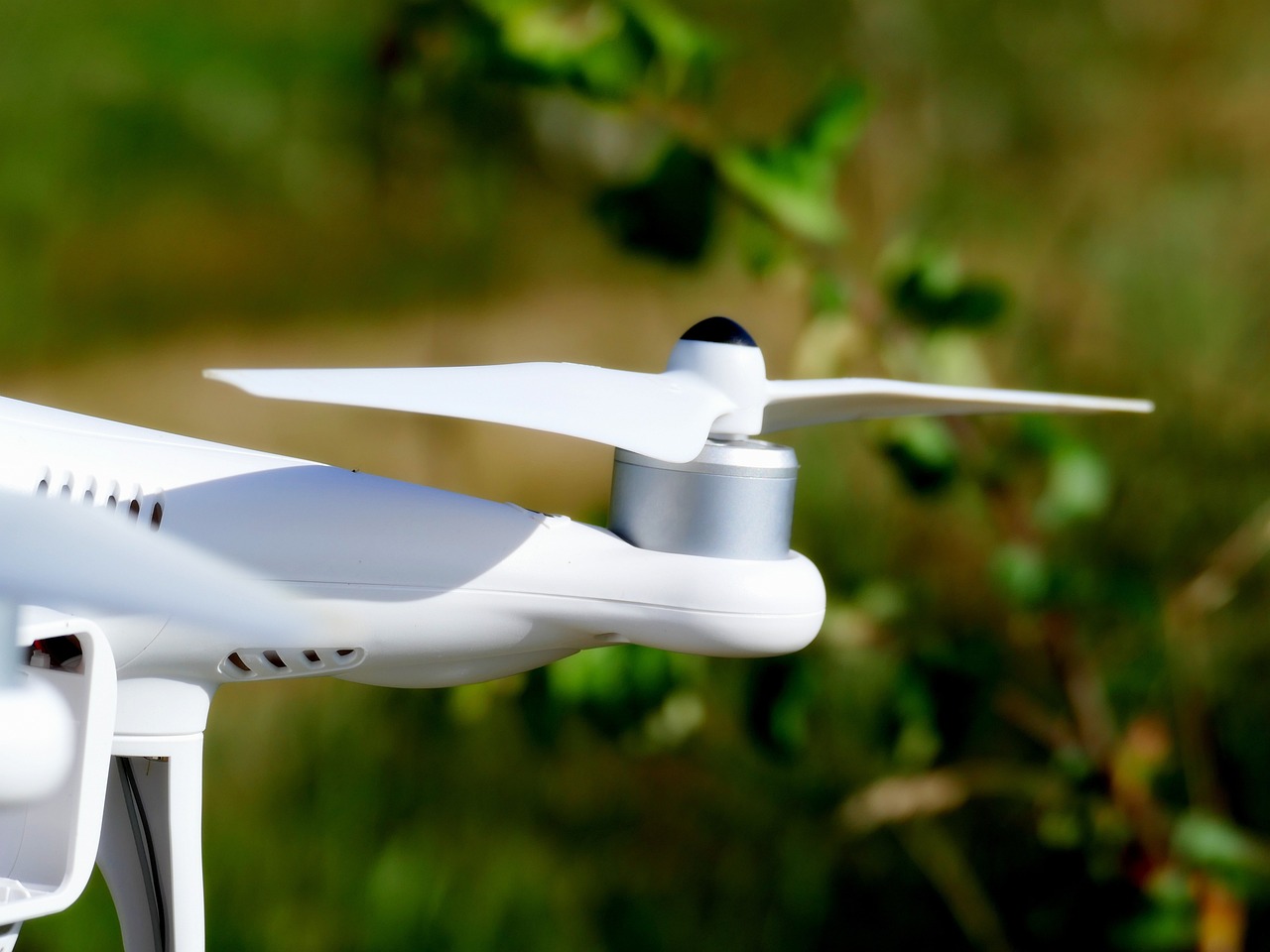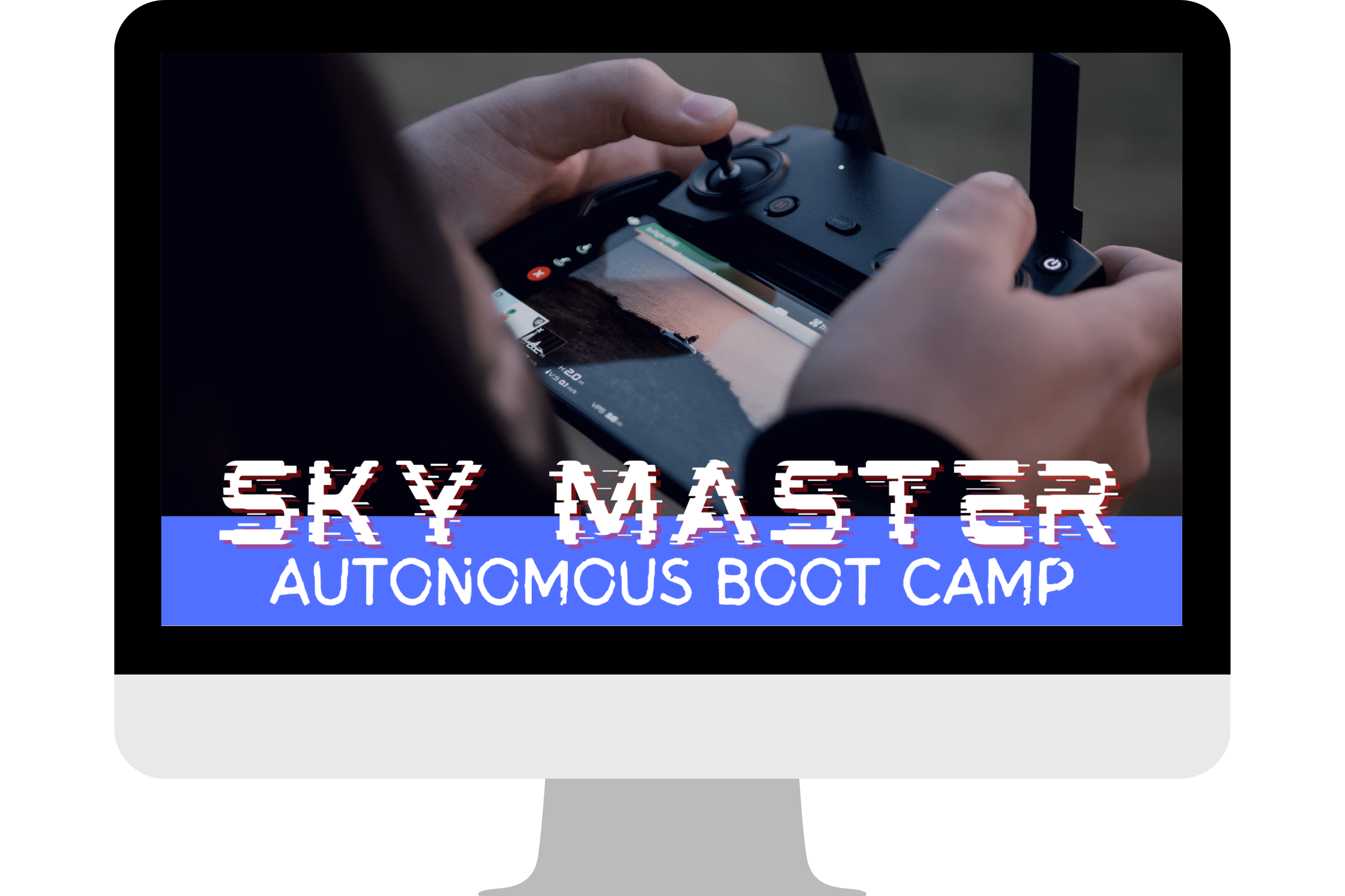Sky Master
Autonomous Boot Camp
Currently on Pre-Sale - Launching 05/31/2024
Who is this course for?
Ideal for novice commercial and recreational pilots seeking to enhance skills and build confidence.
Looking to make the jump and level up your services with mapping and modeling? You'll learn how to automate that.
Train the remote pilots in your business without adding to your workload.
Make education interesting by integrating Drone Flight School in STEM classes.

Kickstart your remote pilot career
Stand out from the crowd with prospective employers and clients.
Learn from a full-time remote pilot that actually uses this stuff everyday.
While not a requirement, a lot of employers and clients prefer at least 50 flight hours.
Lifetime access to the course and materials means you never lose what you've paid for.
Training that can be completed on your schedule and at your pace.
What you'll learn
Accounting for 15 - 25% of the test, you will learn all the Part 107 regulations, with the most important ones to remember highlighted for you. We'll even give you a couple of easy ways to study and remember them, not only for the test, but to prepare you as a remote pilot.
Also accounting for 15 - 25% of the test, we will teach you all about the National Airspace System along with sectional charts and how to easily (and quickly) understand them. We'll give you some good options for practicing and we even include a special video lesson all about Dallas-Forth Worth airspace.
Aviation weather reports and weather theory will be about 11 - 16% of the test questions. You'll learn all about weather reports, including METARs and TAFs, how to decode them, and the theory portions of the weather they represent, and you'll get a practice plan to help this become second nature.
You will learn about the loading and performance of aircraft so you'll be ready to answer the 7 - 11% of the questions they make up on the test. We'll explain load factor charts, give you a quick and easy way to calculate the load factor (with and withouth a calculator) and more.
Representing 35 - 45% of the test, operations questions will make up the largest portion of what you'll see on test day. You'll learn about sUAS operations, emergency procedures, pre-flight inspections, and airport operations. This way you're ready to dominate at the testing center.
To help you retain your knowledge and put your new skills into action, we have several quizzes, practice tests and projects for you.

Between video lessons, project breakdowns, and tricky test question explanations, we have over 15 hours of video lessons arranged in more than 10 different modules. I know, I know, 15 HOURS!!!! *insert shrieking noises* - Don't worry, we've broken them down into smaller videos that make this easier to watch, retain, and digest. In fact, our longest video lesson is only about 20 minutes in length.

Atomic UAS goes beyond the typical, watch the instructor talk at the screen video lesson format. Sure, we have those also, but we include creative learning methods to help you learn like, 3D airspace models, augmented reality, first person view videos, and more.
Syllabus
Module 1
In Module 1, you'll find out how our training is set up, learn more about the background of the instructor in both teaching and in drones, and get a feel for our learning management system. We'll also go over how the FAA small unmanned aircraft general test is structured, the process for applying for you remote pilot certificate, and more. You will also get to see how our quizzes and practice tests are setup.
Module 2
You'll learn all the Part 107 rules and regulations in Module 2 so you can avoid turbulence with the FAA. We'll cover general Part 107 definitions, general regulations, operating rules, remote pilot certification, operation over human beings, waivers, and Remote ID.
Module 3
Airspace is one of those topics where some students start to go sideways when studying for their remote pilot exam. Especially if this is all brand new to you. With us, we'll teach you all about the NAS (National Airspace System) including airspace classifications, explain the differences between controlled and uncontrolled airspace, dive into special use airspace, and look at TFRs and NOTAMs. If that wasn't enough, we're also going to look at the airspace classes built into 3D models that makes visualizing it that much easier.
Module 4
When you first look at a sectional chart, it looks like someone melted a box of crayons down, threw it on a map, and then set the map on fire. In Module 4, we will teach you how to take all that madness and make it smaller than it appears. We'll explain all the sections of the chart legend, how to pick information out on the chart, determine different classes of airspace, locate areas on the chart using latitude and longitude, and more. At the end of the module, we'll jump on SkyVector and show you an easy, simple, and free method to practice sectional charts - AND check to see if you're correct so you don't learn bad habits.
Module 5
As a future certificated remote pilot, you may be asking yourself a question right now. "Why do I have to learn about airport operations?" I know, I'm a mind reader. Anway, we'll explain the why in Module 5, which in a nutshell is so you can safely operate closer to airports than any rec pilot will get authorization to. You'll learn about traffic patterns, runways, right-of-way rules, and airport chart supplements.
Module 6
In this module you'll learn all about radio communications. Including the call signs and phonetic alphabet that make up aviation lingo, you'll learn about the communications procedures at towered and non-towered airports, and we will dive deeper into the dreaded "Where is the aircraft?" question that pops up on the remote pilot exam.
Module 7
What the TAF?!?!?! In Module 7, you'll learn about ASOS, AWOS, METARs, TAFs and an easy way to remember if they're giving you wind direction in true or magnetic north. You'll learn how to successfully decode METARs and TAFs. The last part of the module we'll show you how to practice so you can make quick work of your weather report questions come test time.
Module 8
So much weather theory you may try to start forecasting the local weather. We'll cover topics like density altitude, atmospheric conditions, wind, temperature & dew point, clouds, weather fronts, thunderstorms and more!
Module 9
Strap in and get ready to learn about UAS Operations in Module 9. We'll cover how to make sure you're good to go as the pilot, the science of flight, emergency procedures, night operations, and compliance & logging.
Module 10
We'll round the course out with aeronautical decision making where we'll cover all the aspects that go into crew resource management. We'll also look at risk, mitigation, the hazardous attitude and antidotes in aviation, and several FAA checklists to help keep things safe and efficient.
BEYOND Module 10
While you will be familiar with all the topics on the remote pilot exam once you click "finish" on Module 10, you'll need a little extra study and practice before you're ready to ace that test. That's why we've got information for you, beyond Module 10. And these aren't recycled YouTube videos thrown at you as "bonus" content. You'll get a study guide, checklists for daily practice, a study schedule, 5 full length practice tests with video explanations for correct answers, and more.
Your instructor

BJ Mullinax is a former police officer and law enforcement instructor from South Carolina. With a LE career that spanned 15 years, he first began flying drones for crash-scene mapping in 2017. In 2022, he left law enforcement to become a full-time drone survey pilot. He has logged hundreds of hours of flight time and over 7,000 hours of instructional time.
What students are saying
FAQs
Our course has a help module that includes a FAQ block as well as the process for contacting us for help. From explaining a question more thoroughly in an email to hopping on a Google Meet and walking through a project, we have several different avenues to assist you.
Since the course is available online, you'll be able to start the course when you register. Whether it's a Sunday at 2:00 AM or noon on a Thursday, you'll be ready to go.
It happens. If you buy this online course and within 30 days aren't 100% satisfied, we will refund your purchase price, minus a 3% administrative fee from our payment processor. We do reserve the right not to refund the course is more than 30% has been completed.
Need to train several individuals in our READY 107 Online training course? No problem at all, contact us at bmullinax@atomicuas.com and ask about our multi-attendee discounts.
